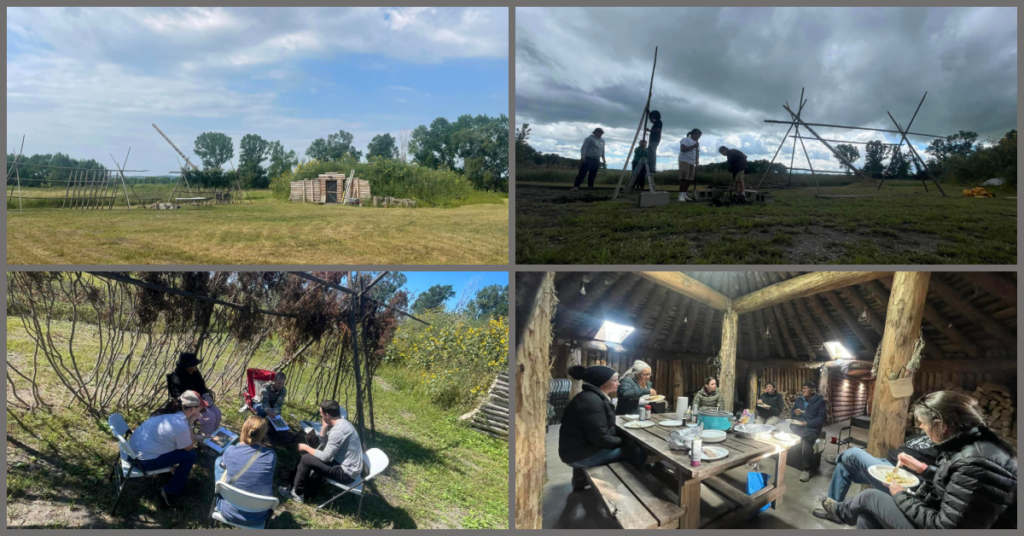13 Moons Earthlodge Gatherings Connect Young Dakotas to Culture
November 23, 2024

Until the passage of the American Indian Religious Freedoms Act (AIRFA) of 1978, Indigenous peoples across the United States were prohibited from practicing their religions, and the use of sacred objects and materials had been forbidden since the1880s. With AIRFA in place, tribes around the country have spent nearly 30 years reclaiming their traditional practices.
Nis’to Incorporated, a Native nonprofit located on the Lake Traverse Reservation, is reclaiming culture through a series of monthly Earthlodge Gatherings where youth and young adults participate in discussions and hands-on activities in accordance with the 13 moons observed by the Dakotapi (Dakota people).
Funded in part by a grant from SDHC, Nis’to began holding the gatherings at the Bundle Carriers Earthlodge in Sisseton last May. They will close out 2024 with an event on Thursday, Dec. 5, at 5:00 PM.
Using once-forbidden cultural knowledge as a lens, the gatherings seek to build strength and resilience among young Dakotas, said Dustina Gill, CEO and founder of Nis’to. Each event revolves around seasonal topics and activities that traditionally took place during that moon. For example, during Tipsina Bokta Wi, or Digging Wild Turnips Moon, participants learn about harvesting and drying wild turnips, as well as harvesting spring plants that have already begun to seed.
“Having these gatherings around the 13 moons is so impactful,” Gill said. “The families who follow these moons are examples of cultural confidence and strength because of the knowledge shared within their families. We are providing that beyond the families to all the people interested in learning how to implement these teachings into their lives.”
The title of the organization itself is an accurate description for the program’s goals: “Nis’to” refers to a “concern for others outside of yourself,” and Gill feels that the Earthlodge gatherings provide space, both literally and figuratively, for that concern – for sharing cultural knowledge and building community. The monthly gatherings allow Dakota elders and families to go beyond the brief “snapshots” they might be able to convey by visiting schools or speaking to organizations.
Gill also believes the project allows for the creation of cultural circles that extend well beyond the monthly gatherings. She is already planning for the gatherings to continue in 2025 and long afterward, saying, “We’ll never be done.”
For more information about the 13 Moons Earthlodge Gatherings, contact Gill at (605) 237-2180 or sitowiyan@hotmail.com.
Learn more about humanities programming in South Dakota by signing up for SDHC e-Updates!